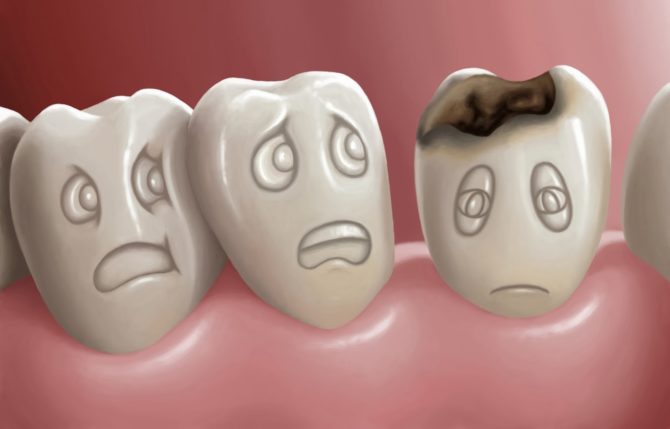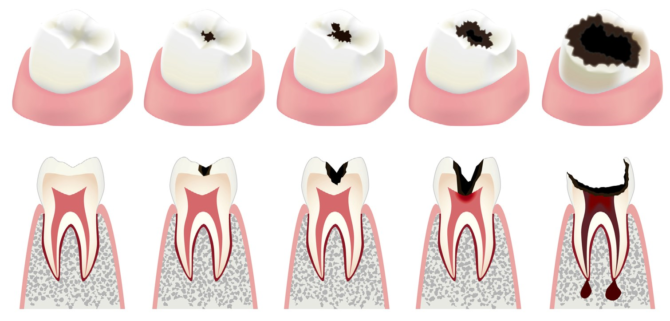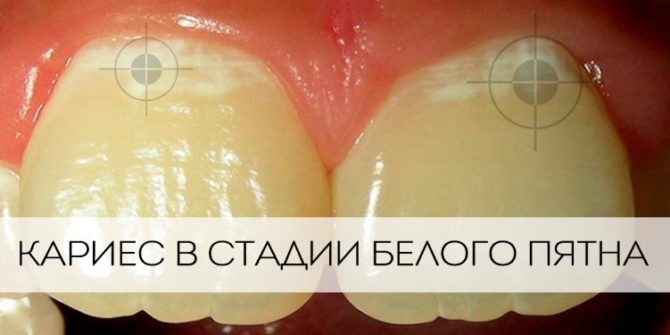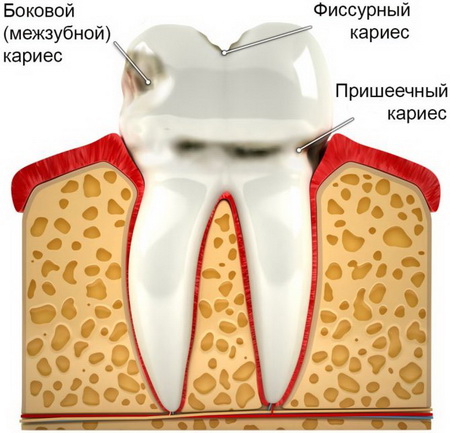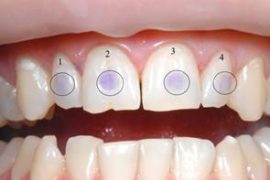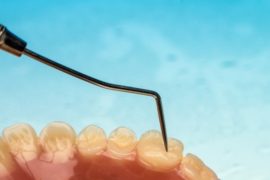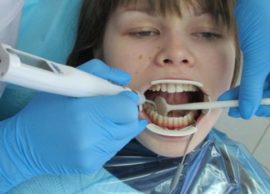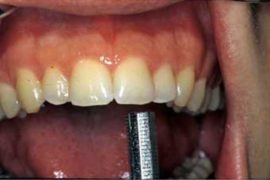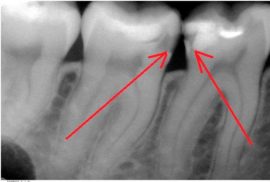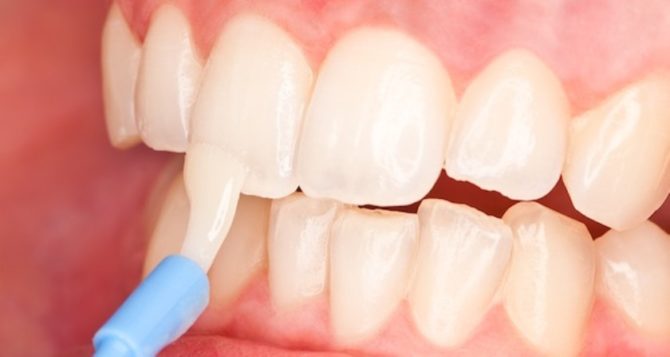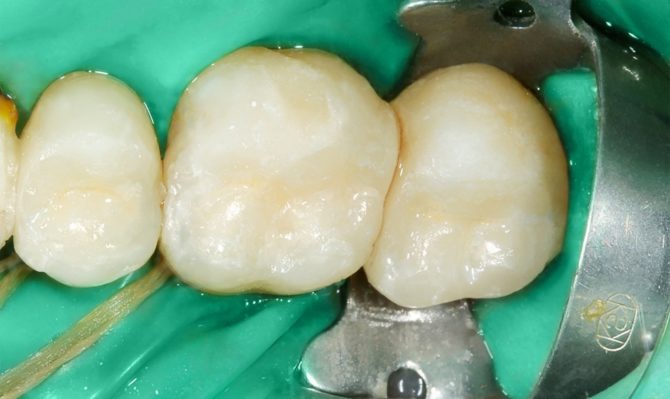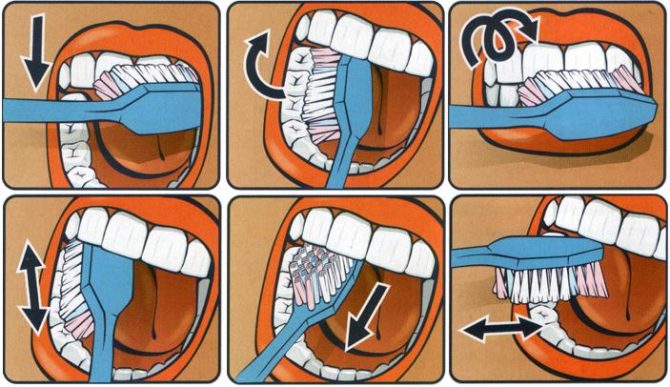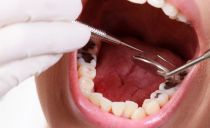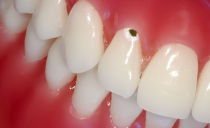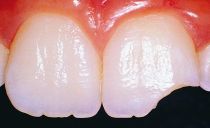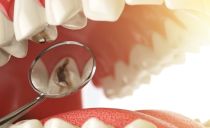Tooth decay: what is it, types, stages, how to treat
Among all diseases known to science, dental caries is the most common. The pathological process and its beginnings are found in 93 percent of adults and in 80 percent of children with a milk bite.
Content
What is tooth decay: definition
From Latin, the name translates as “rot”, it is. In the initial stage, due to the adverse environment, the inorganic part of tooth enamel is destroyed. If at this time you examine the affected area under a microscope, you can see the foci of reproduction of cariogenic bacteria - streptococci. Their life activity is characterized by active fermentation, which is a catalyst for the process of decay.
Later, destruction of hard tissues is also observed, which is also a consequence of putrefactive processes.
If untreated, the incipient dental caries goes into pulpitis and periodontitis - complex inflammatory complications.
The main stages of development of caries
Tooth decay occurs gradually and continuously. But for a more accurate diagnosis in dental practice, it is customary to distinguish four stages of the development of the disease. Differentiation is based on the degree of penetration of caries into the dental tissue.
Spot stage
The clinical picture of the first stage, when dental caries only appears, is expressed in the loss of gloss of enamel. Already at this stage, professional supervision is necessary, which is why doctors strongly recommend that they come for preventive examinations twice a year - every 6 months. This is precisely the period during which the disease does not have time to develop before the destruction of deep-lying tooth tissues.
The insidiousness of the spot stage is in an asymptomatic course. Tarnished enamel with whitish spots rarely causes alertness.
To identify such areas, dentists use a special dye substance - methyl blue. Only by tinting the enamel, the doctor can identify caries in the stain stage.
Superficial caries
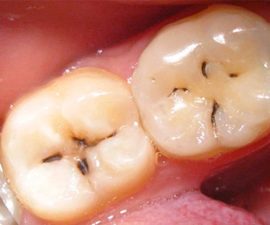 The destructive processes of the upper enamel layer that go unnoticed progress. Pain occurs, patients note an increase in sensitivity to salty foods, sour drinks, sweets. All these are classic symptoms of the next stage - superficial caries, which is treated much more difficult.
The destructive processes of the upper enamel layer that go unnoticed progress. Pain occurs, patients note an increase in sensitivity to salty foods, sour drinks, sweets. All these are classic symptoms of the next stage - superficial caries, which is treated much more difficult.
A small cavity appears at the spot site - a defect, still located within the enamel, but already bordering on the dentin - the main part of the tooth.
Medium caries
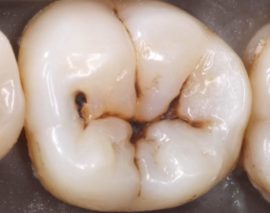 With moderate caries, rotting occurs not only in the upper layers, but also in the dentin. The size of the cavity increases, and the discomfort is more pronounced. Patients begin to refuse cold and sour, approximately half of the patients plan to go to the doctor at this time.
With moderate caries, rotting occurs not only in the upper layers, but also in the dentin. The size of the cavity increases, and the discomfort is more pronounced. Patients begin to refuse cold and sour, approximately half of the patients plan to go to the doctor at this time.
Since dentin is much softer than enamel, caries at this stage develops faster - it is better not to postpone a visit to dentistry.
The reason for urgent treatment should be pain that does not pass within 15 minutes after taking hot or cold food, salty. This means that rot has reached the pulp.
Deep caries
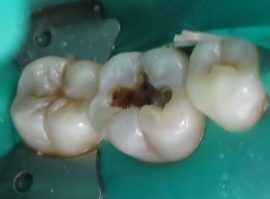 Severe changes in dentin, a painful reaction to temperature and chemical irritants, pain from touch - these are all symptoms of deep caries.Externally visible extensive carious cavity with softened darkened dentin.
Severe changes in dentin, a painful reaction to temperature and chemical irritants, pain from touch - these are all symptoms of deep caries.Externally visible extensive carious cavity with softened darkened dentin.
This stage is the last chance to save a tooth. If pulpitis occurs, nerves will have to be removed, and more global consequences can cause tooth extraction.
Types of dental caries
Another classification of caries is based on the location of the affected area:
- Fissure caries. The most common among the population. Places of its concentration are natural depressions due to the anatomical structure of the tooth, interdental spaces and grooves.
- Cervical. It affects the neck of the tooth.
- Atypical. Appears on places unusual for classical caries: on cutting edges, protruding tubercles.
- Secondary. It is observed when any medical manipulations in the oral cavity have already been carried out: prosthetics, caries treatment.
The reason for observing in the oral cavity the secondary type of dental caries can be the use of poor-quality filling materials. Unprofessional work of the dentist can also affect.
Causes of caries
Risk factors are:
- malnutrition with lots of sweets;
- viscous due to the genetic predisposition of saliva;
- weak immunity;
- lack of hygiene;
- hereditary softening of dental tissues;
- work at chemical enterprises;
- place of residence (fluoride content in drinking water).
It was noted that carious teeth are more often observed in women. This is due to physiological processes (pregnancy, lactation), which create the conditions for weakening the body.
Diagnostic Methods
To accurately determine the nature of tooth damage, doctors use many methods. The main types of diagnostics include:
These methods are applied only to carious teeth, healthy teeth are not subjected to unnecessary diagnostics. Only a doctor with a special education can determine what the study should be. The patient can assist by providing the results of a previously performed diagnosis. According to them, dentists determine how long violations occurred, with what speed dental caries and its complications develop.
Ways to treat tooth decay
There are several ways to cure tooth decay. Modern facilities and medical equipment make it possible to choose not only effective, but also the most sparing technology.
Demineralization
In the spot stage, carious teeth are sensitive to remineralizing therapy. It is better to treat them in this way in the doctor’s office. The process looks like this:
- Plaque is removed.
- The stain is treated with a weak solution of citric acid, the residual composition is washed off with a small amount of water.
- After application is done with a solution of calcium gluconate.
The effect of gluconate is enhanced by electrophoresis. In the most severe cases, the duration of therapy does not exceed 15 minutes, the determination of the duration of the procedure is at the discretion of the doctor. With the right treatment, you don’t have to treat your teeth - the stain will disappear.
Filling
If the development of caries could not be avoided, demineralization is useless. At this stage, the only way out is to install a seal.Affected tissues are removed and replaced with composite materials, amalgam or ceramics. Ceramic and composite inlays are most preferred since they have a natural tooth enamel color.
The more caries is launched, the greater part of the tooth will be prepared. To reduce the loss of healthy tissue, it is necessary to start treating your teeth as early as possible.
New developments
In the near future, caries can be treated with a new method. It is based on the fact that melanocyte-stimulating hormones are introduced into the carious cavity, and under their influence, healthy cells of the dental tissue begin to multiply actively, gradually displacing caries.
According to employees of the French INSERM Institute, it takes only a few weeks to fully restore a tooth using this method.
The method is unique and quite effective. But until he passed the necessary clinical trials, only traditional treatment is possible.
Disease prevention
The occurrence of dental caries is, by definition, associated with a lack of hygiene. Rot occurs where favorable conditions are created for the growth of acid-forming and lactobacilli: mucus, plaque, food debris. Therefore, an important and necessary condition for the prevention of the disease is permanent and proper brushing of the teeth using brushes, flosses and fluoride-containing toothpastes.
In addition, caries prophylaxis of any kind should include:
- restriction in sugar intake;
- rinse with chlorhexidine, the solution should have a certain concentration - from 0.1 to 0.2%;
- the use of chewing gum with xylitol;
- regular visits to dentistry.
Moscow clinics offer another preventive measure - sealing fissures and cavities with flowing polymers, the presence of which leads to caries. This procedure reduces the risk of tooth decay by almost 90 percent and allows you to postpone surgical treatment for a long time: drilling and filling.

